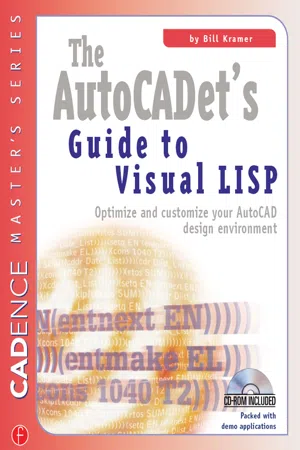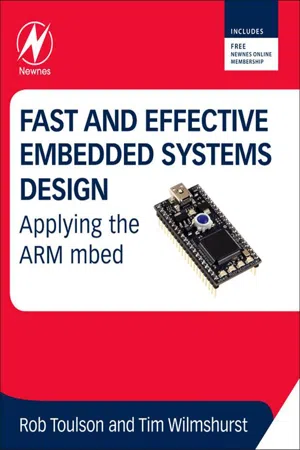String in C
In C programming, a string is a sequence of characters stored as an array of characters terminated by a null character '\0'. Strings in C are used to represent text and are manipulated using various string manipulation functions. They are a fundamental data type and are widely used in programming for tasks such as input/output, parsing, and data processing.
3 Key excerpts on "String in C"
- Dogan Ibrahim(Author)
- 2012(Publication Date)
- Wiley(Publisher)
...Remember that strings are a collection of character arrays terminated with the NULL character. Using pointers, we can create a string, as shown in the example below: Here, a hidden character array is created at compile time, containing characters ‘JOHN’, terminated with the NULL character. The character pointer p is initialised and loaded with the address of this string in memory. Thus, p holds the address of the first character of the string, that is the address of character ‘J’. The programmer has no control over the size of the created string and therefore should not attempt to alter its contents using the pointer. In many applications we may want to create long fixed strings. This is easily done using pointers and declaring the strings as constants. An example is given below: It is important to realise the differences between the following two ways of creating strings: In the first statement, a character array called Text is created and is terminated with a NULL character. Individual characters of this array can be accessed by indexing the array. In the second statement, the characters ‘An example text’ and terminator NULL are stored somewhere in memory, and pointer p is loaded with the address of the first character of this text, that is the address of character ‘A’. We can create arrays of text strings using pointers. In the following example, seven pointers are created with names Days[0] to Days[6] and each pointer is loaded with the corresponding address of the day name. The dimension of the pointer array is set to 7 automatically by the compiler: 3.2.15 Structures Structures are used in programs to group and manipulate related but different types of data as a single object or variable. The elements of a structure can all be of different type, which is in contrast with an array where all elements must be of the same type. For example, a structure can be used to store details of a person, such as the name, age, height and weight as a single object...
- eBook - ePub
- Bill Kramer(Author)
- 2013(Publication Date)
- Routledge(Publisher)
...C HAPTER 4 Working with Strings The most common type of data you will use when writing programs is the string type, which consists of a string of characters. Strings can carry an assortment of data, most of which is coming in from or going out to the user. Input and output is a key element of any program. In this chapter, you explore how strings are stored, created, joined, torn apart, and converted. Storing Strings Visual LISP treats all strings as equals. Whether a string is empty or many characters long, the operations remain the same. To create a string constant, you simply supply a string between quotation marks (“) in the appropriate place in the program. Your string can be any length, although you might want to keep it within reasonable limits for printing. Strings are created also by when they are read from a file, input by the operator, obtained from dialog boxes, or the result of a conversion from another data type. To save a string, you use a SETQ expression and giving the string a symbol name. Strings are stored on the stack or the heap, depending on where the symbol is defined. It is a good idea to keep strings from growing too large to minimize the amount of stack or heap space used. If your program is running out of memory, you probably have too many strings in use. There are two recurring themes to memory problems and strings. It may be that the stack is overflowing (a stack overflow error is produced in Visual LISP), in which case you are most likely using large strings in a function that is being called frequently or recursively. Those strings should be moved to the heap or to a function that is higher in scope so that they are not stored on the stack each time the function is called. Another issue often related to poor string management is a significant slowdown in performance after running a process for a while. If this occurs, the heap is probably storing strings that are not being used anymore and are just taking up space...
- eBook - ePub
Fast and Effective Embedded Systems Design
Applying the ARM mbed
- Tim Wilmshurst, Rob Toulson(Authors)
- 2012(Publication Date)
- Newnes(Publisher)
...The null character allows code to search for the end of a string. The size of the string array must therefore be one byte greater than the string itself, to contain this character. For example, a 20-character string could be declared: char MyString[21]; // 20 characters plus null B.8.2 Pointers Instead of specifying a variable by name, we can specify its address. In C terminology such an address is called a pointer. A pointer can be loaded with the address of a variable by using the unary operator ‘&’, like this: my_pointer = &fred; This loads the variable my_pointer with the address of the variable fred ; my_pointer is then said to point to fred. Doing things the other way round, the value of the variable pointed to by a pointer can be specified by prefixing the pointer with the ‘∗’ operator. For example, ∗my_pointer can be read as ‘the value pointed to by my_pointer ’. The ∗ operator, used in this way, is sometimes called the dereferencing or indirection operator. The indirect value of a pointer, for example ∗my_pointer, can be used in an expression just like any other variable. A pointer is declared by the data type it points to. Thus, int ∗my_pointer; indicates that my_pointer points to a variable of type int. We can also use pointers with arrays, because an array is really just a number of data values stored at consecutive memory locations...


